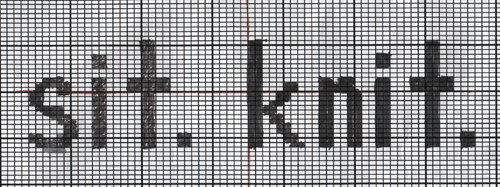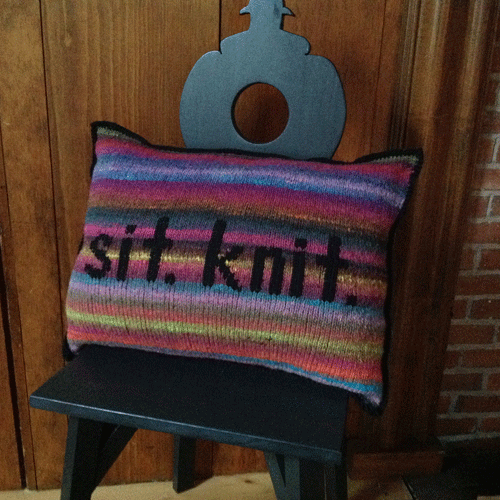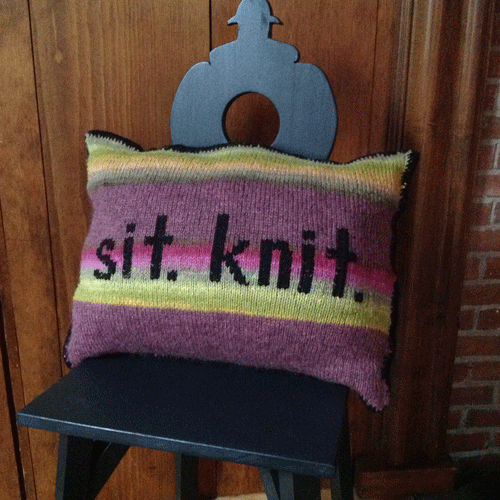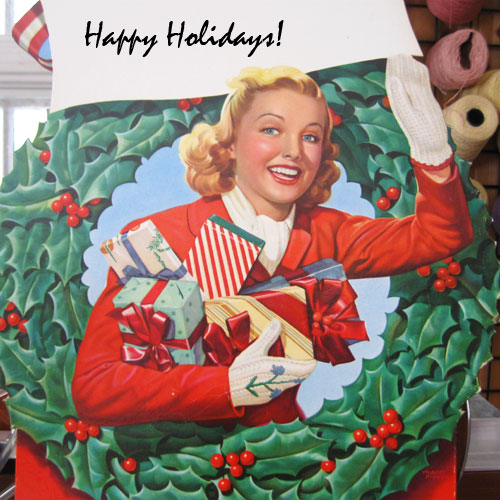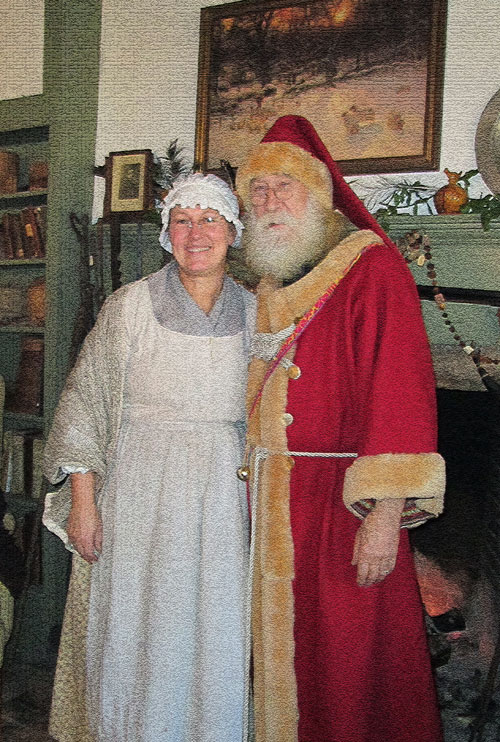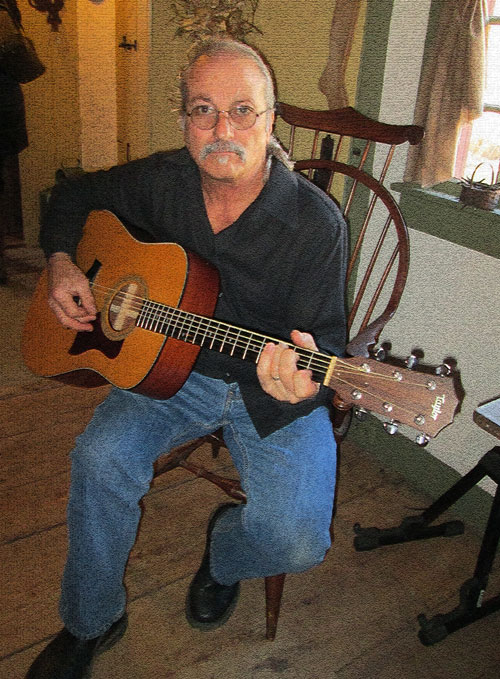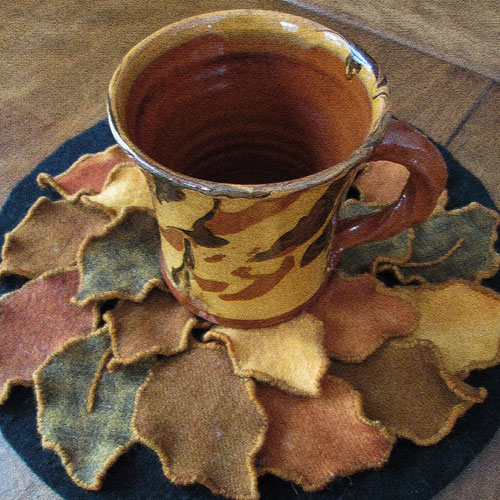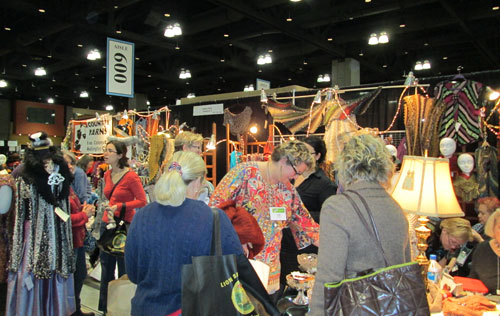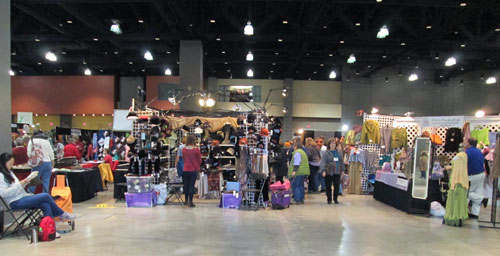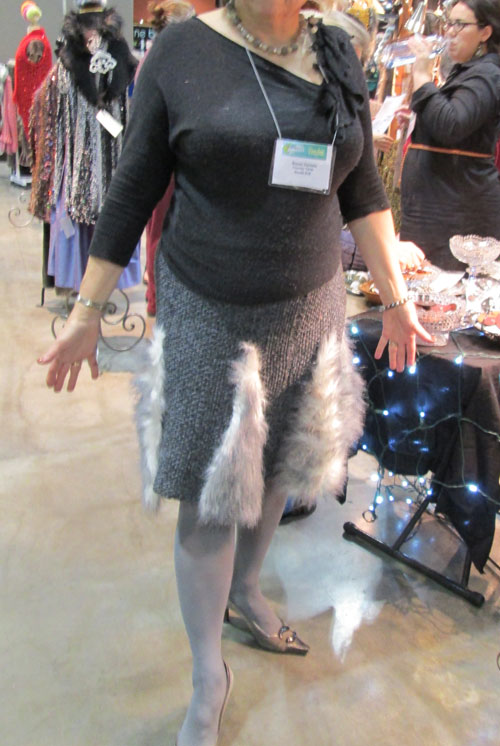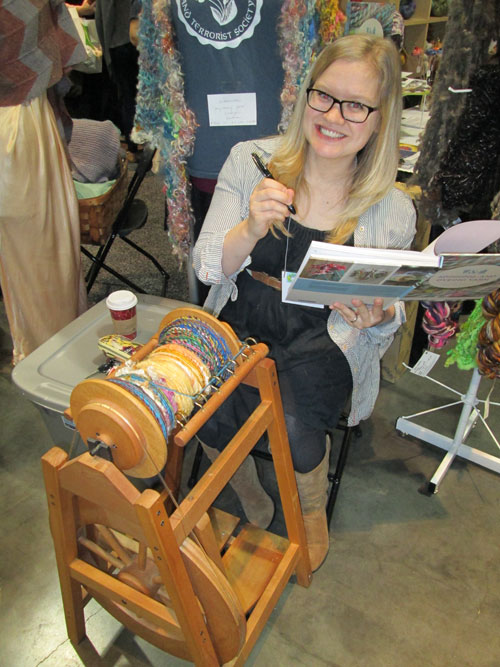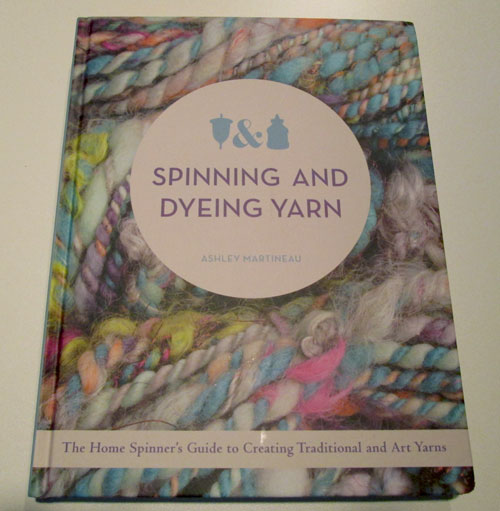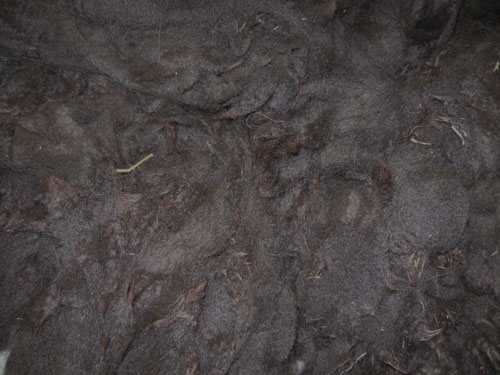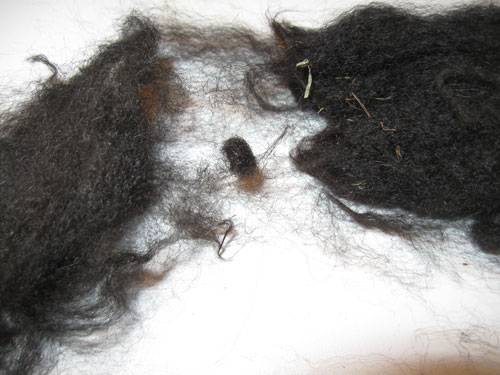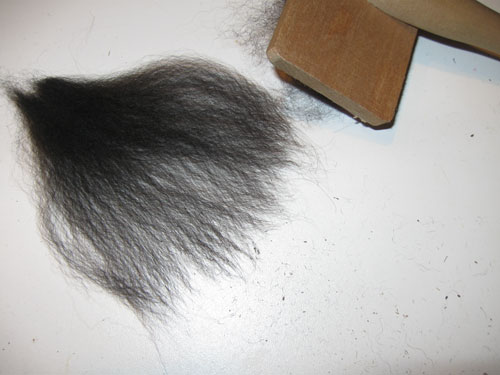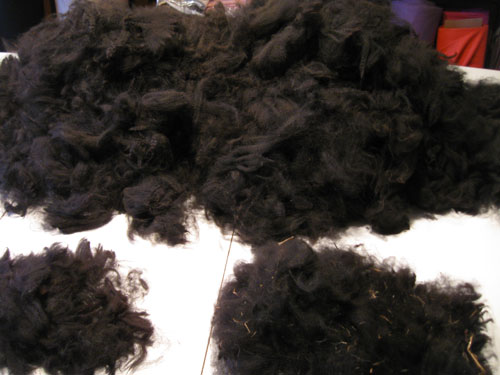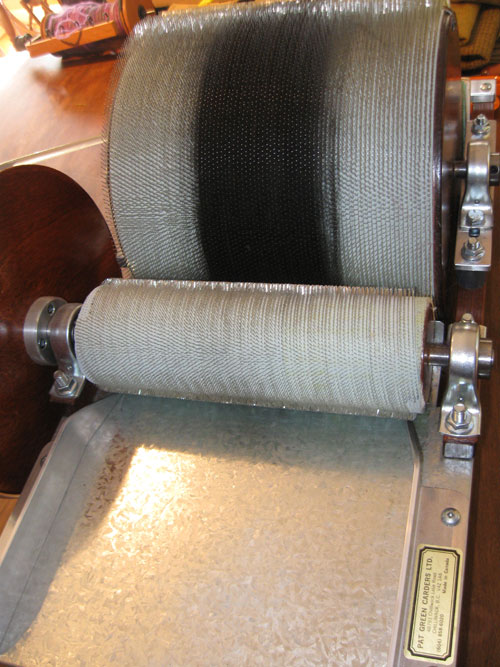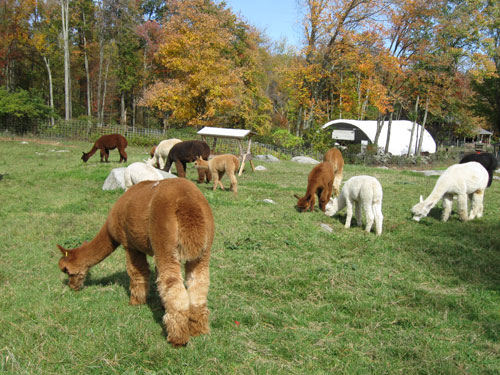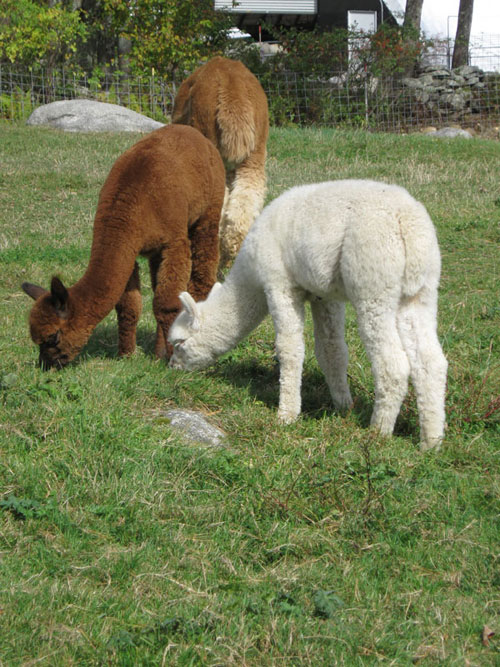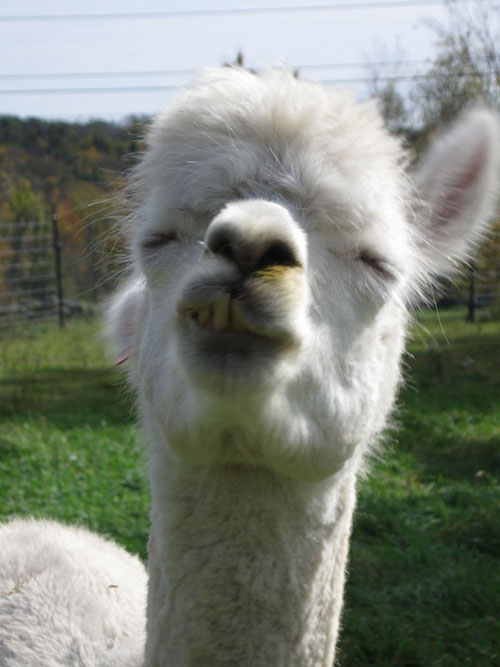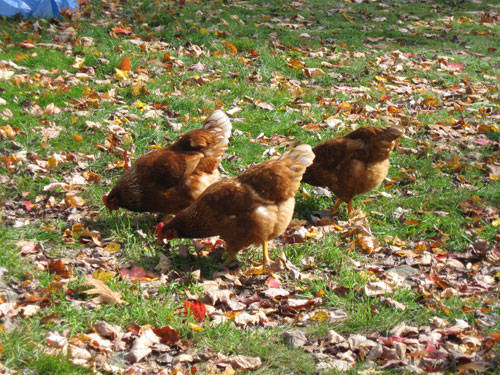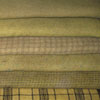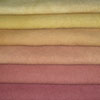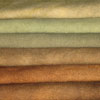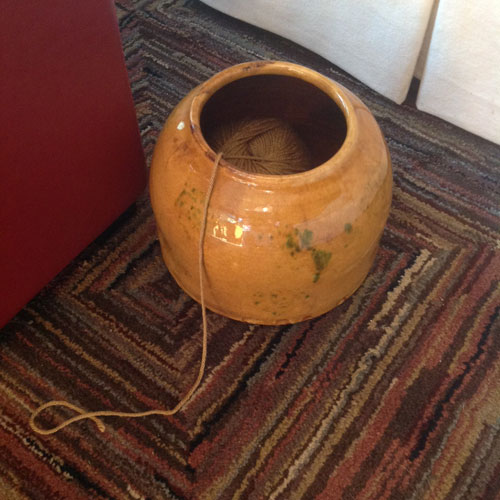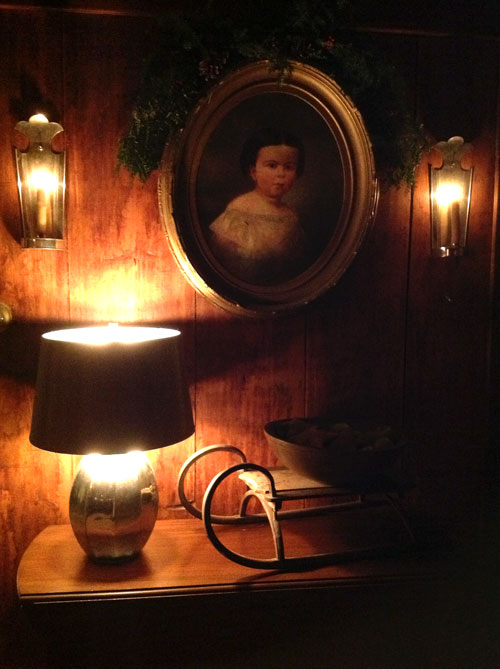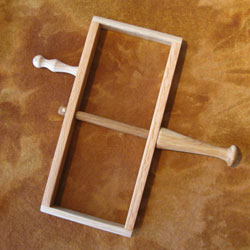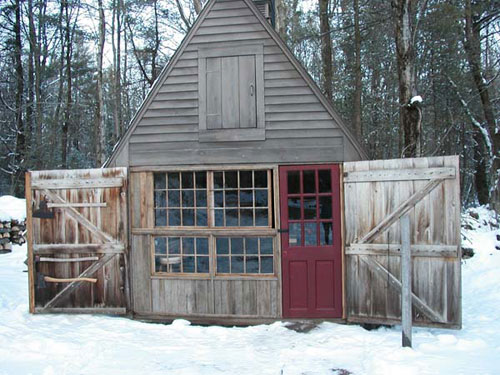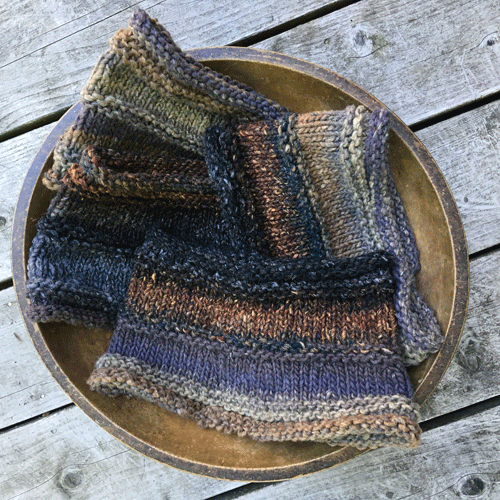 Are you ready to start your Christmas knitting? Here’s a quick and simple cowl I designed in two versions. One is totally straight and the other flares out at the base so it will fit into the necklines of your coats and jackets.
Are you ready to start your Christmas knitting? Here’s a quick and simple cowl I designed in two versions. One is totally straight and the other flares out at the base so it will fit into the necklines of your coats and jackets.
The yarn I used was Noro’s Iro, a bulky blend of 75% wool and 25% silk that knitted up at a gauge of 3.5 stitches per inch on size 10 1/2 circular needles. I needed less than a full 100g skein for either version. You can also use two strands of knitting worsted weight wool. I suggest you use a yarn with decent body as you don’t want this cowl to be too floppy.
Straight version:
Using your 10 1/2, 24″ circular needle, cast on 64 stitches. Join in the round.
Knit in stockinette (knitting all stitches) for six rows.
Purl a row.
Knit a row.
Purl a row.
Continue in stockinette for 10 rows.
Purl a row.
Knit a row.
Purl a row.
Knit in stockinette for another 10 rows.
Purl a row.
Knit a row.
Purl a row.
Knit in stockinette for six more rows.
Bind off.
Both the top and bottom of the cowl will roll, which provides a nice finish.
 Flared version:
Flared version:
Cast on 80 stitches and join.
Knit in stockinette (all knit stitches) for six rows.
Purl a row.
Knit a row.
Purl a row.
Knit a row.
Next row: *Knit six stitches, Knit 2 tog, rpt from * until end of row. You will now have 70 stitches on your needle.
Knit six more rows in stockinette.
Next row: *Knit five stitches, Knit 2 tog, rpt from * until end of row. You will now have 60 stitches on your needle.
Knit a row.
Purl a row.
Knit a row.
Purl a row.
Knit in stockinette for 10 rows.
Purl a row.
Knit a row.
Purl a row.
Knit six rows in stockinette.
Bind off.


